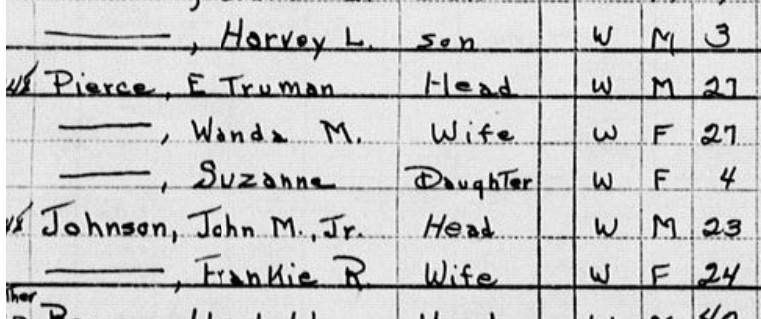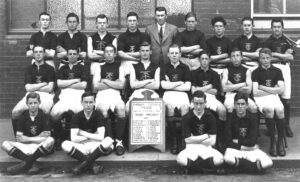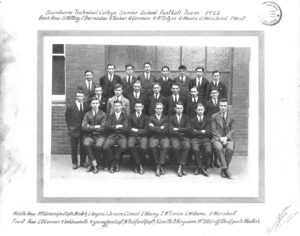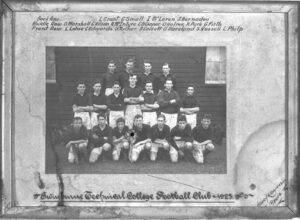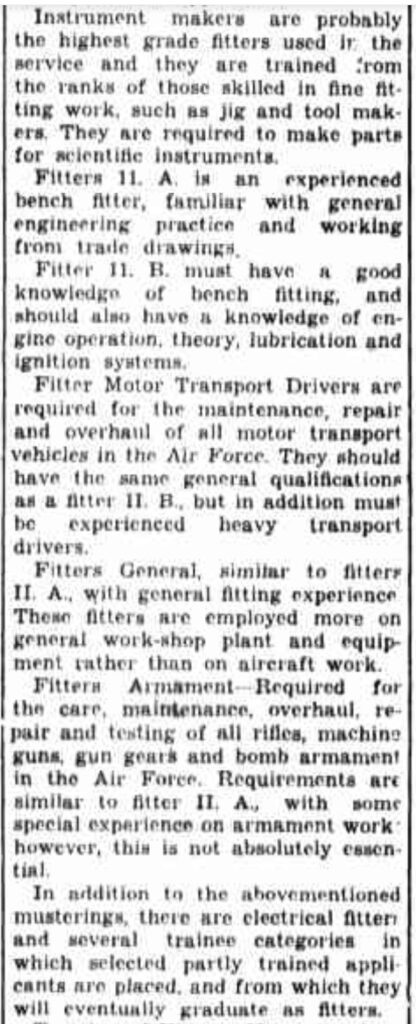Even though I’ve covered Project Helios’ fall to Earth [sorry!] in previous posts (much supported by David DeVorkin’s detailed account in “Race to the Stratosphere”), because of its close links to Project Mogul there are also external mentions of Helios in (for example) Albert Crary’s journal.
Recapping: even though Project Helios’ maiden manned balloon flight to the stratosphere was planned for the 21st June 1947 (the summer solstice), the overall administration of the project collapsed during the Spring, before finally being canned in May 1947. Part of the challenge was that Helios was intended to be a military-scientific platform, and the collaborating groups (who hoped to run their experiments on Helios) all had different practical needs and political priorities.
In this post, I’ll try to look at Project Helios through a Project Mogul lens (if that makes sense).
Project Mogul
Project Mogul, a top secret Army-funded project to put devices high up in the atmosphere to listen for the sound of Russian atomic tests, was one of these collaborating parties: and, as of February 1947, was still expecting Helios to run. And so we see Crary’s journal entry for 4-5-6 Feb 1947 in Oakhurst:
Went over possible experiments in ‘Helios’ balloon June with [Dr Jim] Peoples.
The NYU team’s “Technical Report No. 1” (Appendix 13 in the Roswell Report) mentions that Project Mogul moved from serial balloon linkage (which gave balloon chains taller than the Seattle Space Needle) to the Project Helios parallel cluster (introduced by Jean Piccard, though not actually invented by him):
Figures 31 and 36 show the two methods used to group the balloons in clusters. Figure 31 shows the linear array borrowed from cosmic ray flight techniques; figure 36 shows the modified “Helios Cluster” in which lines from the balloons are joined at a central ring at the top of the load line.
The Helios cluster was by far the easier to handle because of the simpler rigging and the reduced launching strains.
Figure 36 shows the Helios cluster arrangement the Mogul team introduced with Flight #7 (2nd July 1947) (note that I’ve only included the topmost section of the payload):
Here you can see two Helios clusters, with the top (“lifter assembly”) 4-balloon cluster separated from the main 16-balloon cluster. When the balloon reached a specified height (35,000 feet), a switch in the separator would blow a small charge, splitting the lifter balloons off from the main body. Using small charges to release balloons within a cluster was one of Jean Piccard’s innovations – initially, this horrified other balloonists, but many changed their minds once they saw it working successfully for Piccard.
Lt. Harris F. Smith USNR
It seems hugely likely to me that the person who introduced the Helios cluster mechanism to the NYU Project Mogul team was Lt. Harris F. Smith USNR, of NAS Lakehurst, NJ. A Princeton graduate and very skilled free balloonist (according to J. Gordon Vaeth, “They Sailed the Skies”, Epilogue), Smith had been working for Tex Settle on Project Helios at General Mills in Minnesota, and then in the May 1947 reorganisation had been made Scientific Coordinator by Capt Hutchinson (“The Navy still wished to perform missile drops from unmanned clusters, so to this end – and only because of this end – Helios remained an active project” – DeVorkin, p.286).
It therefore seems hugely likely to me that the “Lt Smith NYU” mentioned in Crary’s journal as arriving in Alamogordo for Project Mogul’s “Alamogordo II” balloon expedition phase was indeed Lt. Harris F. Smith.
I also found evidence that at least one unmanned missile drop from Helios clusters was carried out in September 1947 (from an interview with George Hoover).
The C-54 Flights
According to Capt. Albert Trakowski, the Project Mogul team had access to a Douglas C-54 Skymaster in Fort Dix, New Jersey: this was not too far from where most of the (NYU) project team was based.
Hence it seems likely to me that Smith travelled down with the rest of the Mogul team on 28th June 1947 on the team’s allocated C-54 (their research was funded by the US Army).
We also know (from various interviews with Charles Moore) that the Alamogordo II phase closed with 23 members of the team flying back to New Jersey on the 8th July 1947. For example, in this interview with Moore in the Skeptical Inquirer Vol. 19 No. 4 (Jul / Aug 1995), the writer notes:
“Several UFO authors claim that the wreckage, and possibly alien bodies as well, were secretly flown to Wright Field in Dayton, Ohio for analysis. By coincidence, Moore says he and the rest of the NYU balloon crew stayed over at Wright Field the evening of July 8, 1947, en route back to New Jersey, just as the Roswell story was breaking. Moore says they first learned of the incident while in Dayton, and figured that it was probably caused by one of their recent polyethylene balloon flights.”
I really wish I had access to the passenger manifests for these C-54 flights, particularly the 28th June 1947 flight. However, given the US Army’s record retention policies, it seems – unless you know better? – highly unlikely that these passenger manifests survived even ten years.
Where next?
As always, a perfectly reasonable question is now: where should I be looking next? In the same way that Project Helios was funded by the US Navy’s Office for Naval Research (ONR), Project Mogul was funded by the US Army’s Air Materiel Command (AMC). AMC was formed in 9th March 1946 out of various predecessor commands (e.g. AAF Technical Service Command (ATSC), 1st July 1945), and was largely run out of Wright Field (Dayton, Ohio).
The specific part of AMC associated with Project Mogul was the Engineering Division: and indeed the archives do have records produced by the AMC’s Engineering Division (342.3 “Records of the Engineering Division and its Predecessors, 1916-1951”), made up of three major series:
- Central decimal correspondence, 1916-49 (1,774 ft.).
- Research and development project contract files, 1921-51 (3,438 ft.).
- Microfilm copy of research and development technical reports, 1928-51 (400 rolls)
However, for Project Mogul’s constant-level balloon R&D we already know the contract number (W28-099-ac-241), as well as its Technical Report #1 (which amply covers the time period we’re interested in). So unless there’s something unexpected in “Central decimal correspondence, 1916-1949”, I’m not hugely optimistic that there will be anything useful in these Air Force files.
Note that there is some Project Mogul archival film footage relating to inflating balloons at Roswell in 1947, which is part of a series of 16 archival films relating to Roswell, though none of this is available online. There are also 18 archival sound recordings relating to Roswell there across 22 cassettes (which are also unavailable online). I’m not sure if these are on Spotify yet (but maybe they will be soon).

